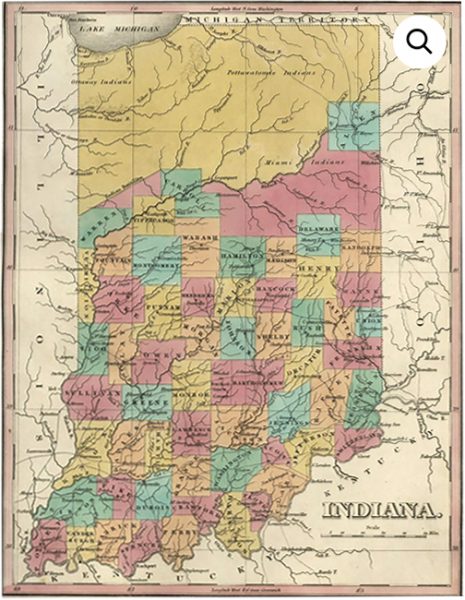From The DEMOCRAT JOURNAL 1860 – 1890
 Mr. Editor–Having changed my location from the sand ridge, of which I gave you a description some time ago, I will now attempt to write up the news from Stony Prairie. This is a tract of land of about fifteen miles, lying on each side of the line between Van Buren and Indian Creek townships. Star City is its commercial ‘hub’. The traveler emerging from the surrounding barrens, will see spread out before him an immense plateau of table land, the most beautiful that lies between the Alleghany and Rocky Mountains, dotted over with the most beautiful and productive farms that will be found in any part of the continent.
Mr. Editor–Having changed my location from the sand ridge, of which I gave you a description some time ago, I will now attempt to write up the news from Stony Prairie. This is a tract of land of about fifteen miles, lying on each side of the line between Van Buren and Indian Creek townships. Star City is its commercial ‘hub’. The traveler emerging from the surrounding barrens, will see spread out before him an immense plateau of table land, the most beautiful that lies between the Alleghany and Rocky Mountains, dotted over with the most beautiful and productive farms that will be found in any part of the continent.
Photo: Anthony Finley. “Indiana.” From A New General Atlas. Philadelphia: A. Finley, 1830. 11 1/4 x 8 3/4. Engraving by Young & Delleker. Original hand coloring. The map depicts the homelands of the Potawatomi, Miami and Ottaway tribes, and, if you look closely, the boundary to Indian lands is noted. The map can be purchased from this site.
Among our oldest inhabitants is Moses L. Washburn, one of our pioneer settlers, who moved to Boone township, Cass county, and afterwards moved to this county as early as 1838. His farm is situated on the western border of this prairie. The woods and country lying between this and the Tippecanoe River was at that time inhabited by a tribe of Indians, the Pottawattamie tribe, of whom Mr. Washburn can tell many amusing stories. One of which we might here mention. The Indians, although treacherous, were peaceable and friendly, and would often visit Mr. Washburn for the purpose of trading deer meat and other articles of trade for milk and such things as they wanted. They held Mr. Washburn with great respect throughout the settlement, and often invited him to their feasts. One such occasion they had collected quite a lot of honey, and gave out the word that they were going to have a ‘honey feast’, to which Mr. Washburn was courteously invited. On arriving at the festive board he found the luscious article very neatly served out on a fresh deer skin, which was yet warm, and blood standing around over it in little pools. Whether Mr. Washburn relished the feast or not, I cannot say; but of course it would have been a breach of courtesy, especially to the Indians, had he refused them.
Next on the list is our old friend, Riley Brown, also one of our pioneer settlers, who moved to this county in an early day. He went to California in 1851, soon after gold was discovered, accompanied by Wesley Noland, Andrew Wirick, Martin H. Venard, and John Nickles, the last two are now dead. They made the trip with an ox wagon in one hundred and five days after leaving the Missouri River. One man walked and drove the oxen, while the others walked and carried their guns, and shot such game as was needed, the wagon being used to haul provisions and such things as were necessary for traveling and mining. Many thrilling incidents have we heard these men relate. The plains and valleys were covered with buffalo, bison, deer and antelope, while the woods and mountains thronged with Indians. Mr. Brown still owns a large farm, but having rented it, moved to Star City, and is now one of our best grain merchants.
Among others of our industrious and well-to-do farmers I will mention of the names of our popular trustee, James D. Marker, who had tasted the pioneer life, and is now one of our staple farmers, and the owner of the best farm on this prairie.
Also Wesley Noland, as above stated, went to California in 1851. After remaining a few years took passage on the Sierra Nevada at San Francisco; sailed on the Pacific to Panama, crossed the Isthmus aboard the ship Prometheus, crossed the Gulf of Mexico and rounded the continent to New York, and crossed the continent home.
Also William Korner, who moved from the state of Ohio, when a boy, went to the War of 1861, where he fought and bled for his country, and still lives to advocate the cause of Greenbackism.
I will close by saying to ‘Wash’ of Rensselaer; that we have a good eye for scenery and would like to exercise it upon a letter from you.
OLD SAND BUR Stony Prairie, March 25, 1879